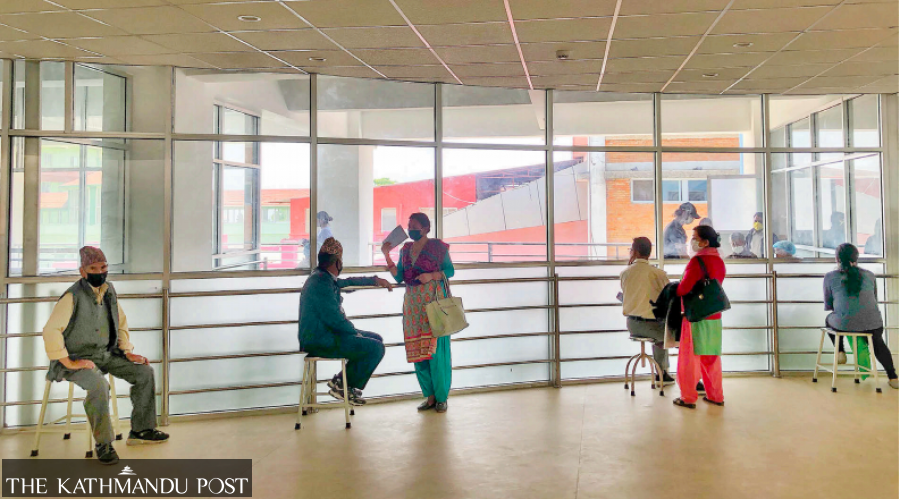Editorial
Other hazards loom
The neglect of non-communicable diseases has disrupted regular health services.
It would take scientific research to conclude if Covid-19 restrictions and preventive measures such as wearing face masks, maintaining physical distance and hand hygiene have contributed to reduced cases of cold, flu, viral fever and other infectious diseases or even water-borne diseases in Nepal; but a second year into the pandemic, the threat of non-communicable diseases silently grows, and we do not know on what scale. For over 15 months, our fragile and inequitable health system has collapsed twice while battling the coronavirus outbreak. Perilous situations prioritised the entire health infrastructure, human resources and funds to manage the pandemic. As a potential and a deadly third wave of the pandemic looms large, public health experts warn Nepal could be hit by another more lethal wave of non-communicable diseases.
To put the warning into perspective, two in every three deaths (66 percent) in Nepal, according to a 2017 study, are caused by non-communicable diseases such as heart disease, chronic obstructive pulmonary disease, lower respiratory infections and stroke. A more recent study by the Nepal Health Research Council, which looked into behavioural and biological risk factors, puts the number at 71 percent. The study shows that the leading risk factor of deaths in 2019 was smoking (17.7 percent), followed by high systolic blood pressure (12.3 percent), household air pollution (11.2 percent), ambient air pollution (9.3 percent), diabetes (8 percent), high cholesterol and kidney dysfunction, among others. Doctors say these figures are alarming because Covid-19 restrictions have denied access to essential health services to those who need them the most, and people could die due to advanced disease stages. In the case of coronavirus infection, the country’s epidemiological profile clearly shows Covid-19 severity and deaths are high among people with comorbidities.
Non-communicable diseases, according to the World Health Organisation, kill 41 million people globally each year, with 77 percent of all deaths in low- and middle-income countries. The diseases not just affect the elderly, but even the productive age groups primarily due to poor lifestyle choices, which have likely been exacerbated by pandemic restrictions. The four groups of diseases—cardiovascular disease, cancer, respiratory disease and diabetes—account for over 80 percent of all premature deaths. That these diseases and more are preventable and can be controlled by early detection, screening and timely treatment has long been established; but the ongoing restrictions have put everything else on the backseat.
The neglect of non-communicable diseases while focusing on Covid-19 has disrupted regular health services and endangered people’s lives. During stringent restrictions, hospitals suspended outpatient departments and cancelled elective surgeries while clinics postponed appointments until further notice. Now that the restrictions are relaxed and health institutions have resumed their services, people out of fear of acquiring the infection, still refrain from booking hospital appointments. And their concerns are valid given how hospitals and clinics are crowded with patients and their caretakers, and we cannot rule out the possibility of hospital-acquired infection. Ongoing travel restrictions also cut off people’s access to health services outside their villages and districts, where health services may be hard to come by.
For lack of an efficient protocol to safely operate health institutions during a pandemic, we are endangering people’s lives. We are also missing the opportunity to prevent diseases with a huge cost to our health system and the economy. While we have an unmissable target of vaccinating more people as soon as possible and preparing to avert or mitigate the third wave, we have to accelerate our response against non-communicable diseases. The situation calls for urgent and effective management, both from the government and the private sector. It has to start by making hospital visits and admissions safer.




 17.67°C Kathmandu
17.67°C Kathmandu














